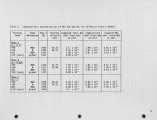| Title |
An Investigation of Ultra Low NOx Natural Gas Burners |
| Creator |
Dupont, V.; Pourkashanian, Mohamed; Williams, Alan |
| Publisher |
Digitized by J. Willard Marriott Library, University of Utah |
| Date |
1992 |
| Spatial Coverage |
presented at Cambridge, Massachusetts |
| Abstract |
There is an increasing demand for ultra-low NOx burners for all types of heating applications. Gas-fired process heaters have been developed and used for many years for the direct drying of foodstuffs and these generally involve fuel-lean premixed flames burning in a stream of ducted air. These burners have many other app1ications and the characteristics of one such burner is studied here operating with fuel-air ratio (o) = 0.77 together with two other flames, one operating a t o = 0.885 and the other stoichiometric. Flames in these 1ean burners produce NOx almost exc1usive1y by the prompt-NOx route and the correct prediction of NOx in these complex low temperature flames by CFD methods requires the use of predictive methods which are accurate at low temperatures. Details are given of one way of achieving this which gives results in accordance with experimental observations. |
| Type |
Text |
| Format |
application/pdf |
| Language |
eng |
| Rights |
This material may be protected by copyright. Permission required for use in any form. For further information please contact the American Flame Research Committee. |
| Conversion Specifications |
Original scanned with Canon EOS-1Ds Mark II, 16.7 megapixel digital camera and saved as 400 ppi uncompressed TIFF, 16 bit depth. |
| Scanning Technician |
Cliodhna Davis |
| ARK |
ark:/87278/s6tf00z0 |
| Setname |
uu_afrc |
| ID |
10560 |
| Reference URL |
https://collections.lib.utah.edu/ark:/87278/s6tf00z0 |
























